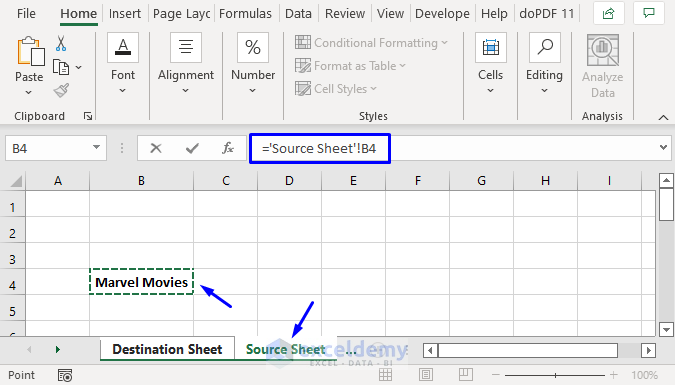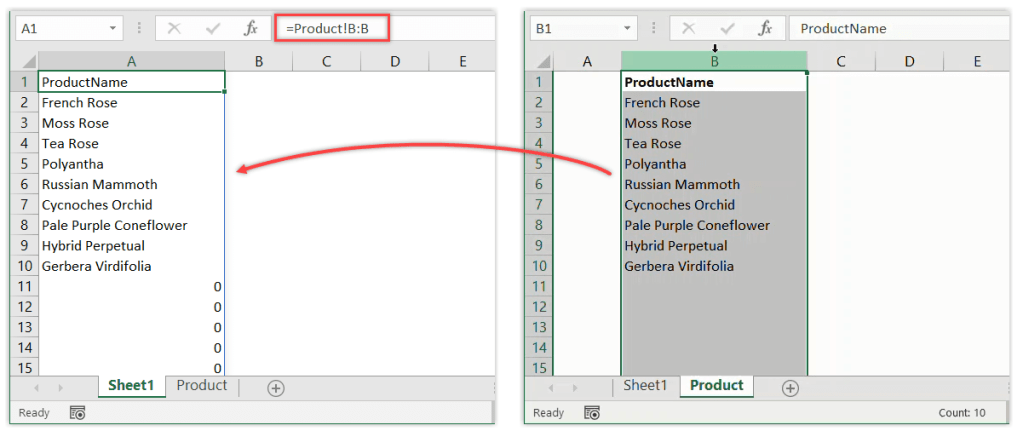How to Easily Link Tabs in Excel for Beginners

In the realm of spreadsheets, Microsoft Excel is a powerful tool that can manage vast arrays of data. One of the lesser-known but highly efficient features is the ability to link tabs within Excel. This functionality allows users to consolidate data from multiple sheets, making data management more streamlined and reporting tasks simpler. Whether you're working on a small project or managing a large dataset, knowing how to link tabs can significantly enhance your productivity. Let's dive into the steps and best practices for beginners to master this feature.
Understanding the Basics of Tab Linking

Linking tabs, or sheets, in Excel means creating dynamic references that update automatically when data in the source sheet changes. Here are the core concepts:
- Cell Reference: This is the address of a cell in a spreadsheet. For example, cell A1 in Sheet1 can be referenced as 'Sheet1!A1'.
- Formula: Using formulas to link cells across sheets, where changes in the source sheet update the linked cells instantly.
- Dynamic Data Exchange: Excel automatically updates the data when changes occur in the linked cells, ensuring all linked data remains current.
Steps to Link Tabs in Excel

1. Opening Multiple Sheets

First, ensure you have multiple tabs (sheets) open in your Excel workbook.
2. Linking with Cell References

To link a cell from one sheet to another:
- Select the cell in your destination sheet where you want the link to appear.
- Type ‘=’ into the formula bar or press ‘Enter’ to start your formula.
- Click on the tab of the source sheet, then select the cell or range of cells you want to link to.
- Hit ‘Enter’. Excel will create a formula like ‘=Sheet1!A1’, which links back to the source cell.
3. Using Functions for Advanced Linking

Sometimes, basic cell references aren’t enough. Here are some functions for advanced linking:
- INDIRECT(): This function allows for dynamic references to sheets. For example, =INDIRECT(A1&“!B2”) will reference cell B2 from the sheet name in cell A1 of the current sheet.
- VLOOKUP() or HLOOKUP(): Use these to look up data in another sheet, based on a matching value.
💡 Note: When using INDIRECT(), be cautious. The function will return an error if the referenced sheet name changes or the cell contains invalid data.
Practical Applications of Linked Tabs

Linking tabs can be particularly useful in:
- Financial Modeling: Link financial sheets for automated updates in consolidated reports.
- Database Management: Use links to pull data from a master sheet to various analysis sheets.
- Project Management: Link task lists or timelines across different project phases for easier updates and tracking.
Tips for Effective Tab Linking

To make the most out of linking tabs in Excel:
- Naming Conventions: Use clear, consistent sheet names to make references easy to follow.
- Maintain Sheet Structure: Keep your workbook organized so that links don’t break due to changes in structure.
- Error Handling: Use the IFERROR() function to manage potential errors from broken links gracefully.
In summary, linking tabs in Excel is a gateway to more efficient data management. By understanding cell references, mastering formulas, and employing functions like INDIRECT(), you can dynamically link your data, ensuring real-time updates and reducing manual errors. As you become proficient, you'll find that linked tabs open up a world of possibilities for data manipulation and reporting.
Can I link a range of cells instead of a single cell?

+
Yes, you can link a range of cells. In your destination sheet, type ‘=’ and then click-drag to select the range you wish to link, or enter the range manually using ‘SheetName!StartCell:EndCell’.
What happens if I delete the source tab?

+
If you delete the source tab, all links referencing that tab will show an error. Using the IFERROR() function can help manage these errors gracefully.
How can I find all the links in my workbook?

+
To find links, press ‘Ctrl + F’, go to ‘Options’, and choose ‘Workbook’. Enter ‘=’ in the ‘Find what’ box to search for formulas, which often contain external links.
Can I link tabs across different Excel workbooks?

+
Yes, you can link tabs across different workbooks by referencing the full path to the external workbook. However, the linked workbook must be open for updates to occur automatically.